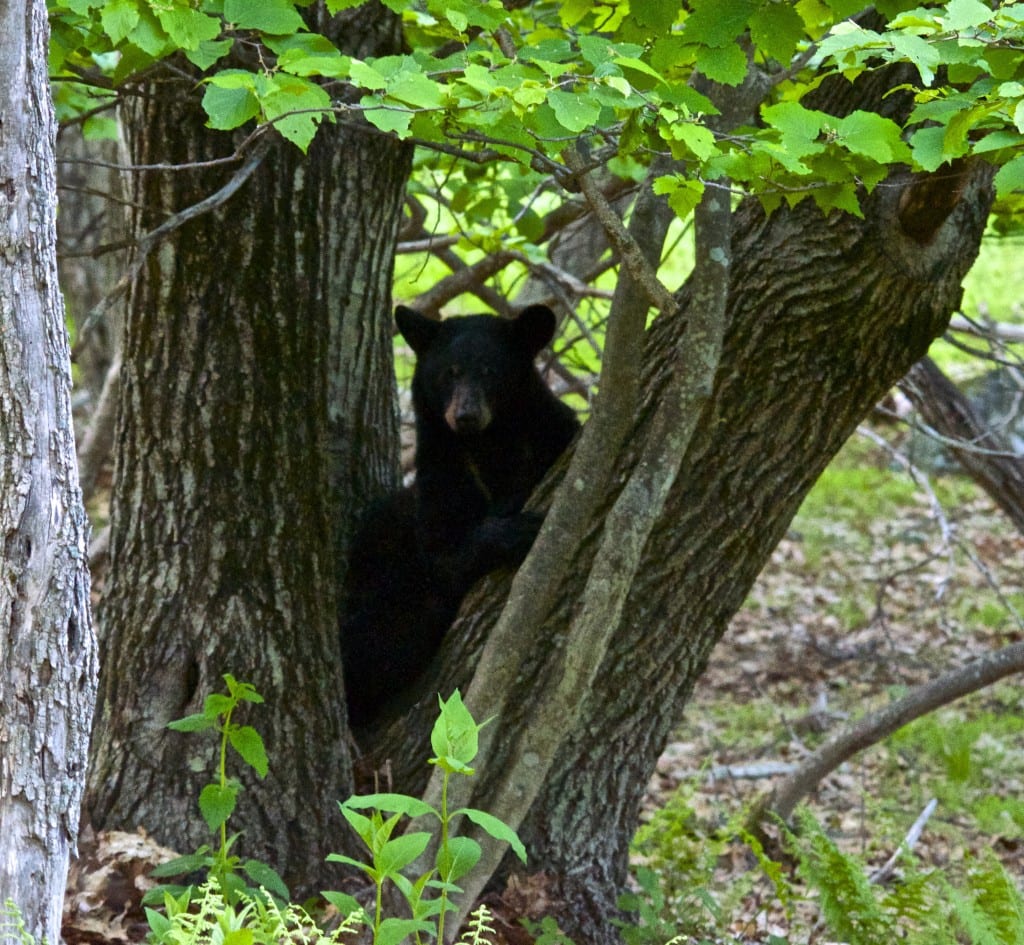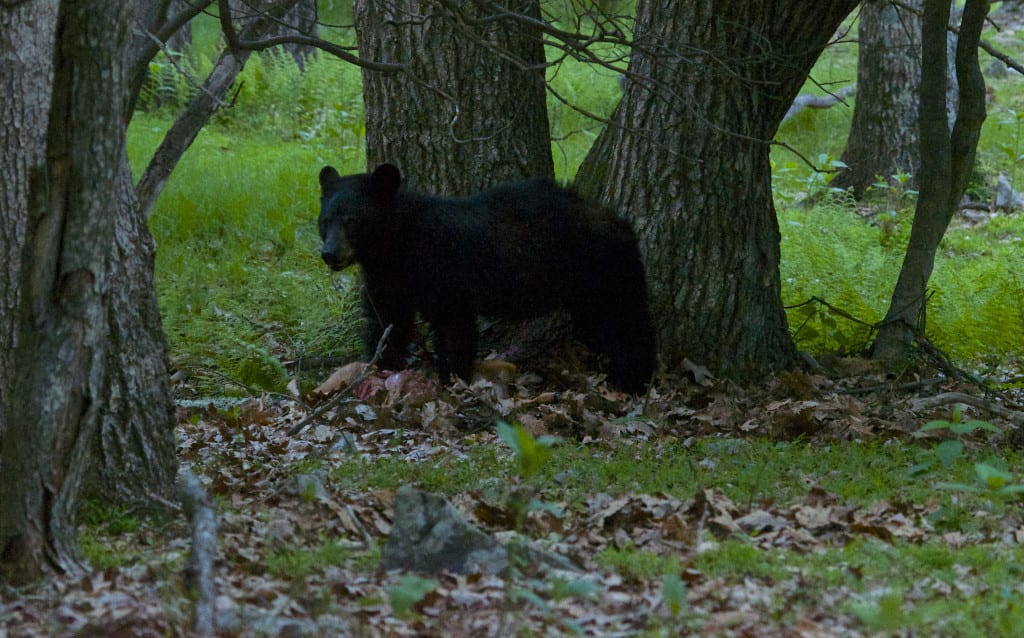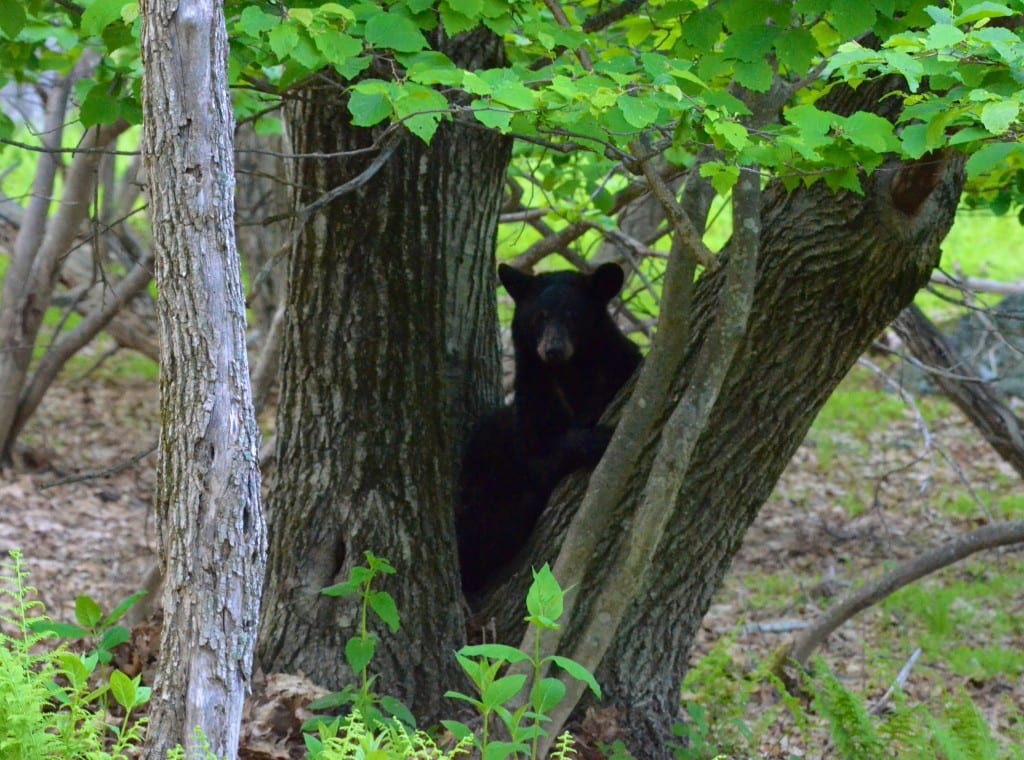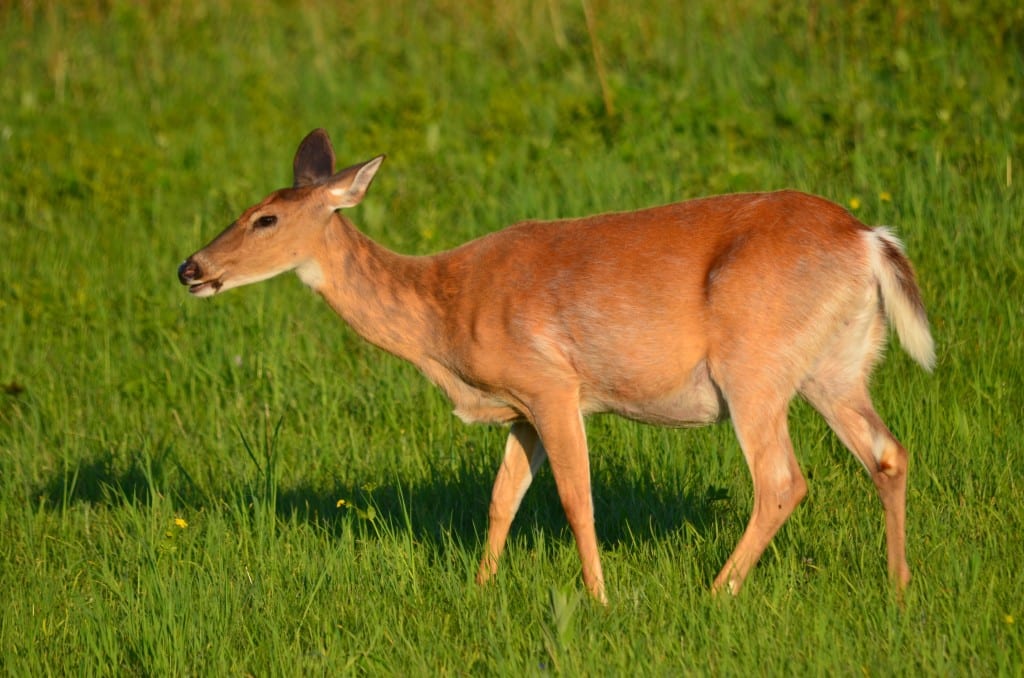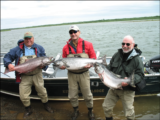By Glynn Wilson –
BIG MEADOWS, Va. — It started out Sunday afternoon Memorial weekend as a trip to the lodge for a few minutes of WiFi. On the way back to the campground, however, it became a “Bear Jam,” the term on the mountain for a traffic jam caused by a bear sighting.
In this case, that would be the American Black Bear [ursus americanus] living in the Shenandoah National Park, reachable from Washington, D.C. in less than two hours.
As it happened, I arrived on the scene just in time to see the juvenile male capture and drag a newborn white-tailed deer fawn into the woods, screaming like a dying child. I began telling people to move on, stop blocking the road and stay on the path, out of the woods. Then I ran back to the camper van to grab the camera with the big lens and came back to get the shot, urging people to back off out of the woods slowly so as not to disturb a potentially aggressive young bear’s meal. It was a dangerous situation, resolved in the proper way.
The first woman who came up to me as the incident was going on asked, with a tortured look on her face, “Can’t they do anything to save the poor baby deer?”
I said, “No mam. There is a fine for interfering with wildlife. Let nature take its course.”
As dusk turned into nightfall, the crowd dispersed. But the discussion by the camp fires had only begun.
This young male just happened to choose and successfully hunt in a small glade of woods between two of the busiest roads in the park, the lodge and the largest campground at Big Meadows. While the National Park Service as part of the Interior Department does not name wild animals, for good reason, I am dubbing him Boo Boo. He made a boo boo by choosing this location. He came back the next night to the same spot in a three-pronged tree, as you can see in the pictures below.
After talking to the bear expert this morning, the staff is hoping not to be forced to intervene and move this little guy. Let’s hope he does not make another boo boo and moves on — to a more remote patch of forest for hunting.
On the other hand, as I talked about the incident to more campers and rangers, this is one of those exciting things about this special place that make it fun and interesting to visit. There is no roller coaster up here on the mountain. It’s all about nature’s show, from the trillion stars in the night sky to the migrating birds to the mountain laurel, just now coming into bloom.
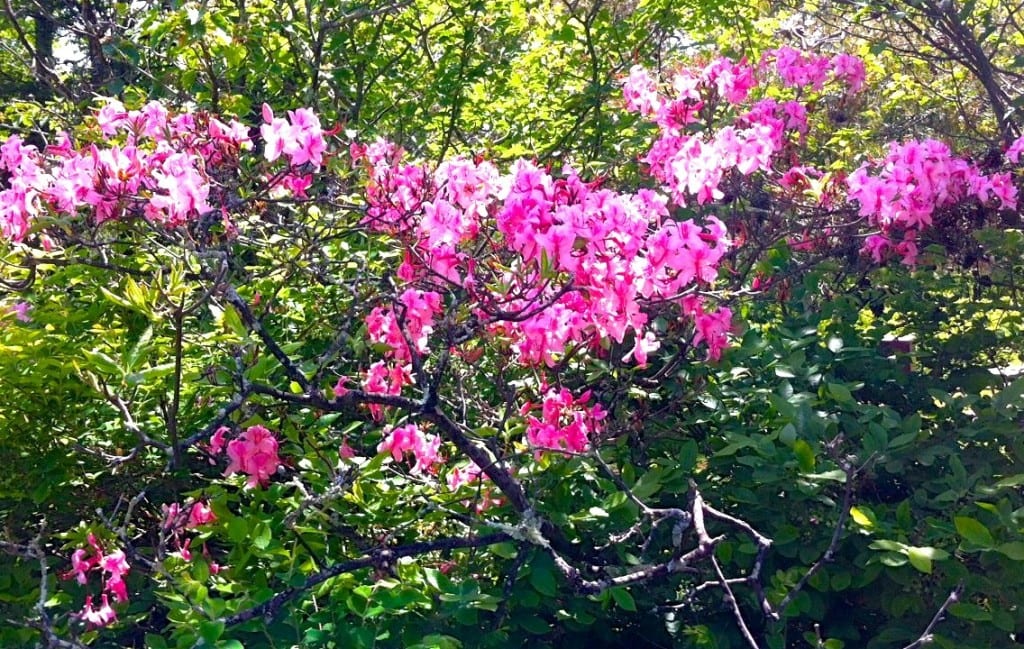
The mountain laurel is blooming around the Big Meadows Campground in Shenandoah National Park: Glynn Wilson
While the white-tailed deer are more than plentiful here, the American Black Bear is more rare. While it lives throughout much of the continent, including Canada, Alaska and Mexico, reaching the Atlantic and Pacific, still its numbers are at risk. They are the only species of bears living in the park, and yes, they do find fawn a fine meal. Once the little ones get their legs under them, though, it’s hard for the bears to catch them.
This two week period in May is prime time for deer births, so we will see more of this in the days ahead. The mother does drop them all around and even in the campground and leave them, to protect them from being scented and found by bears. The mothers come back before dawn and help them away once they can walk.
While campers want desperately for the park staff to “do something” to protect the poor creatures, quite plentiful in this area, there is nothing to be done but listen to and perhaps remember the cries, tell the story when you get home and maybe post a picture on Facebook.
Scientists say there were probably once as many as two million black bears in North America before European colonization. But the population declined to a low of about 200,000 as a result of habitat destruction and hunting.
By the early 1900s, bear populations were nearly eliminated from lands now within the park. On the eastern side of the Blue Ridge, the last bear was reported in Albemarle County in 1910. Bear populations persisted in the Allegheny Mountains to the west, the descendents of which are the most likely source of the current park population, experts say.
Two bears were reported within the newly established park in 1937, and by 1944, the estimated bear population within the park reached 10. By the early 1950s, bear sightings were reported from all three districts with a concentration in the South. Because of the protection offered by the park, the bear population gradually increased through the 1950s to an estimated 75.
Since the 1960s, much of the park’s hardwood forest had reached mast producing age. Intensive agricultural practices on lands adjacent to the park increased the availability of high starch foods preferred by bears like apples, peaches, grapes, corn and honey. The mosaic of agricultural lands, woodlots and stream corridors surrounding the park created nearly ideal conditions for the bear population to thrive and expand.
Better management and changing ecological conditions resulted in increases in bear numbers throughout their geographic range. More than 900,000 are living today on the continent with 5,000 to 6,000 of those in Virginia, according to the latest estimates.
Park staff members have been involved in bear population monitoring efforts over the years. Despite the research, though, “there are still many questions about black bears in the park,” according to the experts at the National Park Service, so “information becomes increasingly more important as threats to the bear population become better understood.”
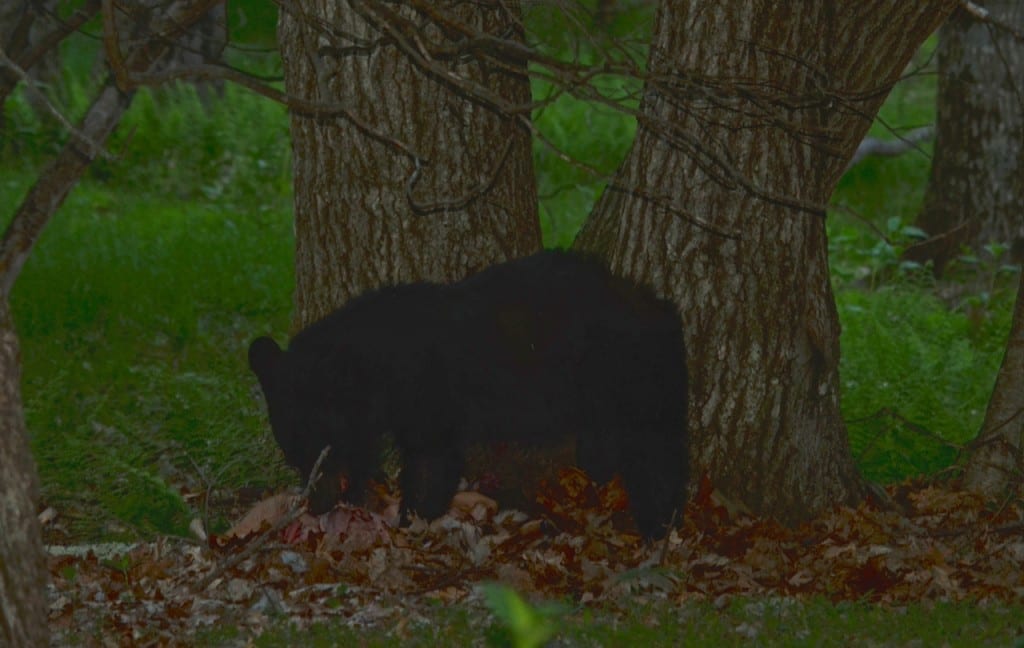
A juvenile black bear feeding on a white-tailed deer fawn across from the Big Meadows Campground in Shenandoah National Park: Glynn Wilson
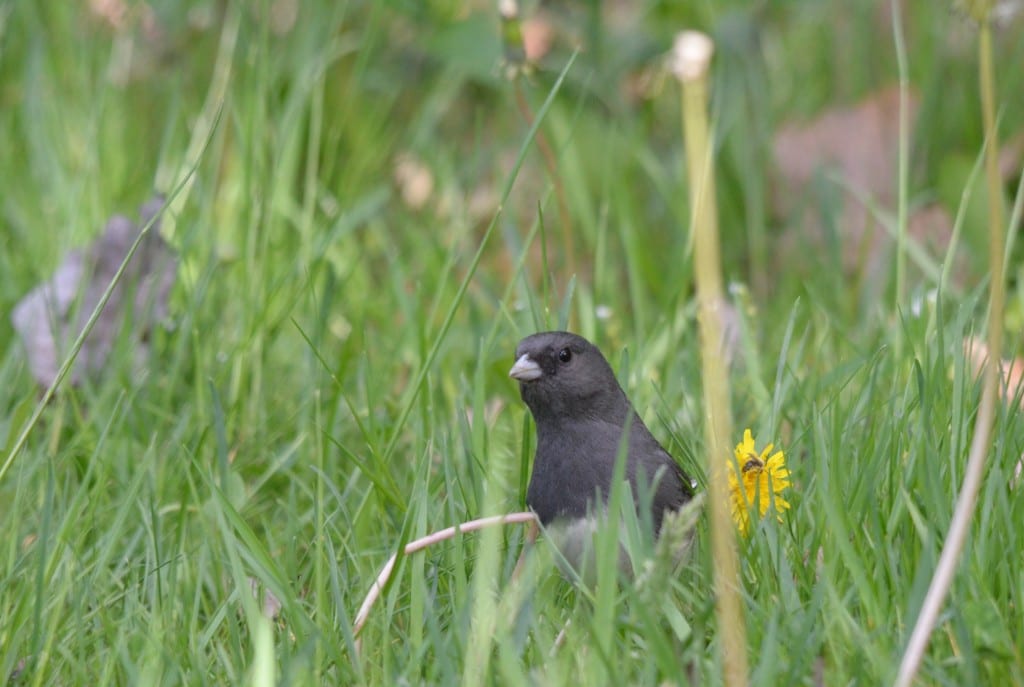
A dark-eyed junco junco hyemalis at Big Meadows in the Shenandoah National Park: Glynn Wilson


